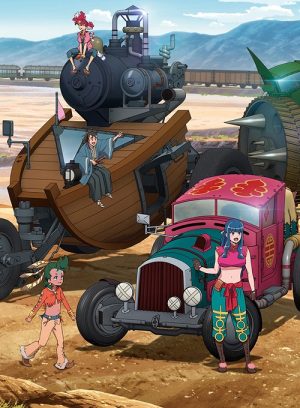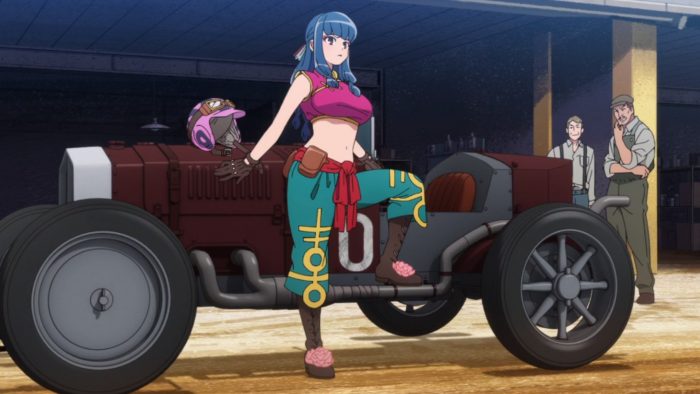
With the unconventional racing anime series Appare-Ranman! wrapping up soon this season, today we’re looking back on the real history of Japan’s many forms of racing and other anime series that have inspired and reflected the country’s robust and unique racing culture. Let’s get going already!
Horse Racing

While we’re focusing a bit more on cars in this article, we’d be remiss not to mention some of Japan’s other popular racing sports, particularly horse racing and Keirin.
Horse racing in various forms has been a part of Japanese culture since at least the early 700s AD where it originated in religious ceremonies conducted by samurai in the Imperial Court and spread across Japan. This type of racing is still performed at places like the Kamigamo Shrine in Kyoto where it is called Kamo Kurabe-Uma (the uma part being “horse”) and kicks off the famous Aoi Matsuri every year in May. As for the race itself, one unique point is that the racers do not start at the same place and the winner is decided by whether the distance between horses shortens or elongates by the end.
However, most horse racing in Japan nowadays is Western-style, which was first introduced circa 1862 by primarily British foreign residents living in Yokohama. Over time, it proved to be very popular with Japanese people and the Emperor Meiji himself, and proper race tracks were built in major cities and spread across the country. A uniquely Japanese form of horse racing called Ban'ei also formed in the late Meiji period in Hokkaido.
As featured in Gin no Saji (Silver Spoon), Ban’ei racing involves huge draft horses pulling heavy weighted sleds across dirt tracks with hills and is more of a test of strength and endurance than speed. Older otaku might also be familiar with Shonen Jump series Midori no Makibao which follows a small white mule who becomes a racehorse.
Keirin & More
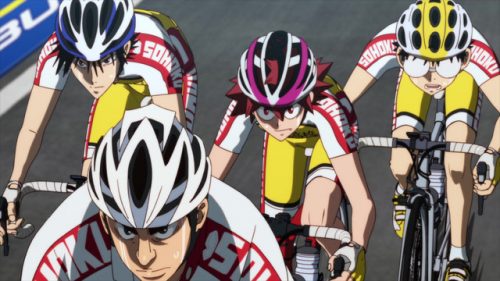
Keirin is a type of paced track cycling originating from Kitakyushu in Fukuoka Prefecture using tightly regulated, brakeless fixed-gear bicycles where racers gradually accelerate across a fixed velodrome track while staying behind the pacer until the final 3 laps where they sprint at very high speeds to determine the winner over several rounds. Outside of keirin, many other variants of bicycle racing are also widely popular in Japan and have inspired many manga and anime like super-hit cycling series Yowamushi Pedal and the underrated Madhouse/Telecom film Nasu: Summer in Andalusia.
One thing worth noting about many types of racing is that they provide one of the few forms of legalized gambling in Japan, specifically horse racing, keirin, powerboat racing, and asphalt speedway motorcycle racing (Auto Race) which is part of the reason why there are so much of these races going on all over Japan, it’s big business and top racers—and lucky betters—can earn huge amounts of money.
Drifting & Street Racing
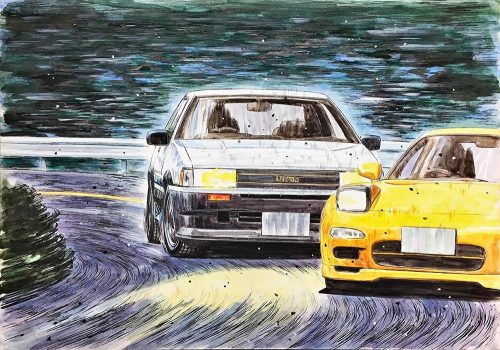
Now to the cars! Probably the most famous part of Japanese car culture worldwide is the fascinating world of drifting and illegal street racing and that is in no small part thanks to popular manga like Shigeno Shuichi’s Initial D and Kusunoki Michiharu’s Wangan Midnight. Drifting techniques were actually first developed by professional racers, particularly motorcyclist-turned driver Takahashi Kunimitsu in the 1970s during the Japanese Touring Car Championship series. Tsuchiya Keiichi, known as the Drift King, further popularized drifting after videos of him practicing on mountain roads (tōge) were covered by racing magazines, spreading them to fellow drivers and street racers alike.
The illegal street racing scene is partially shrouded in mystery for obvious reasons but still exists, albeit not in the numbers of its peak years of the 80s and 90s. They can be roughly divided into the drift-heavy tōge racing on twisty mountain roads as seen in Initial D and the more speed-focused racing done on highways like the Shuto Expressway (aka Wangan-sen) around Yokoyama as seen in Wangan Midnight.
One group in particular, the Mid Nite Club, was world-famous for their extreme racing speeds upward of 300km/h (190 mph), secret communication through coded newspaper advertisements, and strict membership rules and ethics that required not only high-end precision cars and driving but anonymity and expulsion for any involvement in accidents or driving that put others at risk. The club immediately dissolved after two members got goaded into an unsafe race with a bōsōzoku biker gang in a high-traffic area which led to an accident that killed two of the bōsōzoku members and hospitalized two drivers and 6 uninvolved civilians.
Nowadays while the Wangan scene has partially died down due to increased scrutiny by police and other factors, places like Osaka’s Kanjo highway loop have given rise to other prominent groups like the Kanjozoku who are dedicated to racing highly modified Honda Civics.
Formula 1, Rally, and Fantasy
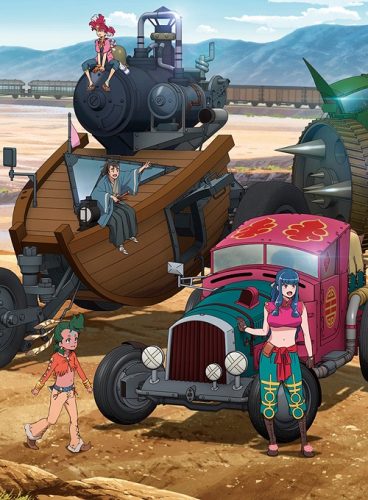
Of course, Japan has also been a part of high-class international racing culture throughout the years with two FIA World Champion drivers Arai Toshihiro and Nakajima Kazuki, participation in famous international races like Le Mans, and hosting its own Formula One races like the Japan Grand Prix. As a leading automobile and motorcycle manufacturing country, many of these races have also brought international prominence to their vehicles like when a Nissan team unexpectedly won the grueling Round Australia Trial in 1958 with their Datsun 210 “Fuji”, not to mention Toyota’s current NASCAR involvement in the U.S.A.
The world of racing has also been expanded in Japanese fiction through countless anime, manga, and video game series such as the iconic classic Mach GoGoGo (Speed Racer), technical craft masterpiece film Redline, fan-favorite mecha racing series IGPX, the previously mentioned, highly fun and anachronistic Appare-Ranman! that we’ve been enjoying this season. There’s even the recent Kandagawa Jet Girls anime and game series that captures some of the speedboat racing culture with a bit of Senran Kagura-esque erotic flair.
Final Thoughts
Altogether, Japan is clearly a country with a deep respect and love of racing that has contributed to its development in numerous ways, be they technical innovation, athleticism, or imagination. What do you like about Japanese racing and racing anime? Can’t get enough Initial D eurobeat? Let us know in the comments section below and be sure to stick around Honey’s for more of all things awesome, anime and otherwise! See ya~!
Recommended Post
Appare-Ranman! Three Episode Impressions Are Waiting For You!
Recommended Post



